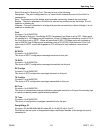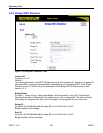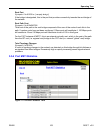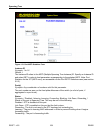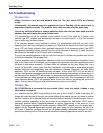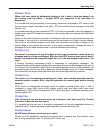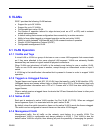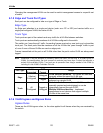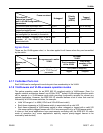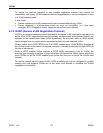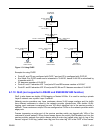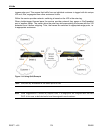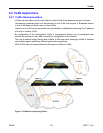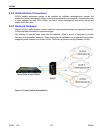
VLANs
RS400 169 ROS™ v3.5
6 VLANs
ROS™ provides the following VLAN features:
• Support for up to 64 VLANs
• Support for up to 15 VLANs
• Configurable port native VLAN.
• Port modes of operation tailored to edge devices (such as a PC or IED) and to network
switch interconnections.
• A default setting that ensures configuration-free connectivity in certain scenarios.
• Ability to force either tagged or untagged operation on the port native VLAN
• Ability to switch between VLAN-aware and VLAN-unaware modes of operation
• Generic VLAN Registration Protocol (GVRP)
• Configurable management VLAN.
6.1 VLAN Operation
6.1.1 VLANs and Tags
A virtual LAN or VLAN is a group of devices on one or more LAN segments that communicate
as if they were attached to the same physical LAN segment. VLANs are extremely flexible
because they are based on logical instead of physical connections.
When VLANs are introduced, all traffic in the network must belong to one or another VLAN.
Traffic on one VLAN cannot pass to another, except through an intranetwork router or layer 3
switch.
A VLAN tag is the identification information that is present in frames in order to support VLAN
operation.
6.1.2 Tagged vs. Untagged Frames
Tagged frames are frames with 802.1Q (VLAN) tags that specify a valid VLAN identifier (VID).
Untagged frames are frames without tags or frames that carry 802.1p (Prioritization) tags only
having prioritization information and a VID of 0. Frames with a VID=0 are also called priority-
tagged frames.
When a switch receives a tagged frame it extracts the VID and forwards the frame to other ports
in the same VLAN.
6.1.3 Native VLAN
Each port is assigned a native VLAN number, the Port VLAN ID (PVID). When an untagged
frame ingresses a port, it is associated with the port’s native VLAN.
By default, when the switch transmits a frame on the native VLAN it sends the frame untagged.
The switch can be configured to transmit frames on the native VLAN tagged.
6.1.4 Management VLAN
Management traffic, like all traffic on the network, must belong to a specific VLAN. The
management VLAN is configurable and always defaults to VLAN 1. This VLAN is also the
default native VLAN for all ports, thus allowing all ports the possibility of managing the product.



